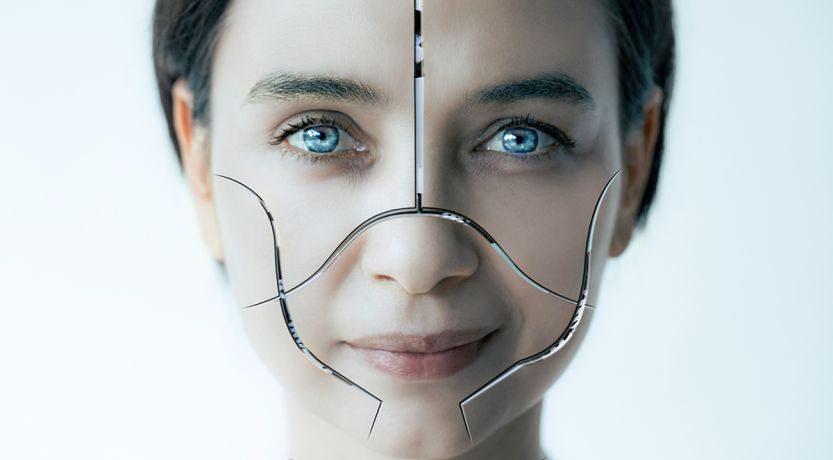Followers of the transhumanism movement say human beings can unlock technology that will allow us to live forever. Will humans be upgraded?
If, through technology, we could upgrade the human body to the point where we could defy age, develop superintelligence, become immune to every disease and potentially live forever—should we? Is that even a realistic possibility?
Transhumanists answer “yes” to these questions.
Major players in big tech, mainstream academia and the World Economic Forum have thrown their weight behind the growing movement. Transhumanism is slowly becoming a household term.
But what is transhumanism, and do its followers have good reason to believe in a future full of upgraded humans?
What is transhumanism?
Transhumanism is a movement that wants to use technology to transcend the perceived limits of the human species and usher in a world of “posthuman” beings.
Professor Yuval Noah Harari, a chief proselytizer of the movement, in his book Homo Deus: A Brief History of Tomorrow, wrote that the aim of transhumanism is to “upgrade humans into gods.”
Some seek to achieve this goal through genetic engineering; others, by building a fully functional cyborg. Either way, as long as human beings overcome their biological limitations, the dream will be realized.
Most people credit Julian Huxley as being the father of transhumanism. The word, which summarized his personal vision for humanity based on evolutionary biology, appeared in his work New Bottles for New Wine (1957). He wrote, “We need a name for this new belief. Perhaps transhumanism will serve: man remaining man, but transcending himself, by realizing new possibilities of and for his human nature.”
Transhumanism is basically modern-day eugenics on steroids. Indeed, Julian Huxley was an outspoken and committed eugenicist during the mid-20th century.
Eugenicists believed humanity had a moral responsibility to directly influence its own evolution—thereby accelerating progress, achievement and human flourishing—by controlling who could and could not reproduce. The theory was built on the premise that certain individuals were inherently more fit than others and, therefore, worthy to propagate the human species.
On the other hand, the eugenicists said, the unfit should not reproduce. This movement eventually became responsible for 70,000 forced sterilizations in the United States. The devastating effects of eugenics in the hands of Nazi Germany are well-known.
Transhumanists have a similarly troubling philosophy. In their view, the fit are those who embrace the utopian vision of using technology to reengineer themselves and shed their pesky biological limitations—while the unfit are those who are naively content with remaining in the outdated human body.
In his 2017 TED article “The Rise of the Useless Class,” Harari discussed hypothetically how society will respond to this “useless class” of people. He speculated that a combination of “drugs and computer games” might be the future for the unenhanced.
So how plausible are these concepts, and how did transhumanism come into the town square of public ideas?
From healing to enhancement
For generations, the job of medicine was basically seen as treating ailments and injuries to bring the body back to normal health.
The pandemic may have played a part in changing that. Aaron Kheriaty, a former professor at the University of California, Irvine School of Medicine, noted a subtle but significant change in this time-tested approach to health and medicine.
“People used to be presumed healthy until proven sick,” he wrote. “You needed a doctor’s note if you missed too many days of work. But during the pandemic people were assumed to be sick until proven healthy: you needed ubiquitous and never-ending asymptomatic testing to allow you to work, travel, gather, and so on” (The New Abnormal, 2022, p. 179).
Kheriaty argued that the old paradigm has now given way to the technocratic paradigm. This new approach no longer views the normal, healthy human body as the reference point. Instead, all bodies are considered sick and must be “technologically vivified and periodically updated from the outside” (p. 178).
In an interview on American Thought Leaders, he summarized the new norm: “You’re presumed to be suboptimally functional until you get this intervention.” This mindset, of course, is a hotbed for transhumanist values.
This shift in how some public health experts view the human body gained noticeable momentum during the pandemic, though it was brewing even before then. In 2020, Adam Kirsch published an essay in The Wall Street Journal where he noted that our “biological fragility” became “more obvious than ever” during the global shutdowns. “Covid-19,” he speculated, “may turn out to be just the kind of crisis needed to turbocharge efforts to create . . . a ‘transhuman’ future.”
Neuralink, founded by billionaire influencer Elon Musk, has not ceased to attract media coverage since its inception in 2016. The company speaks candidly about its desire to implant brain chips into people. Apparently, the technology will be able to treat paralysis, general spinal cord injuries and brain disorders, and even help users control computers with their own thoughts.
The company’s website also features vaguely stated aims to “unlock human potential” and “expand how we experience the world.” Many believe these desires indicate a transhumanist vision for the company. On May 25, 2023, the company received approval from the U.S. Food and Drug Administration to launch its first in-human clinical study.
Biotechnologist Hashem Al-Ghaili unveiled a concept video called EctoLife in December 2022, based on current research in stem cells, ectogenesis, biotechnology and genetic engineering. The eight-minute informational video features a kind of sci-fi artificial womb facility that contains 400 pods, each designed to replicate the conditions in a mother’s uterus.
The video also advertises a hypothetical “elite package” that would allow couples the opportunity to “genetically engineer the embryo before implanting it into the artificial womb.” Thanks to the CRISPR-Cas9 gene editing tool, each couple could customize their baby’s hair color, skin tone, strength, height and intelligence.
In an interview on The Beau Show, Al-Ghaili confirmed, “Everything is really science-based. It’s not speculative, and it’s not science fiction.” He said that the only impediment to artificial wombs right now is ethical restrictions.
These developments reveal a growing dissatisfaction with simply healing a disease or aiding someone who is impaired with glasses or cochlear implants. The ambitions now are to directly modify human DNA, tinker with our biology and enhance our capacities with machines.
Doomed from the start?
Transhumanists view death as a technical error ripe for solution. Technology, they believe, holds the key to true salvation.
Transhumanism is just another iteration of the same lie Satan the devil told our first parents. Adam and Eve swallowed his false promise: “You will not surely die. For God knows that in the day you eat of [the forbidden fruit] your eyes will be opened, and you will be like God” (Genesis 3:4-5).
Human beings have an innate, spiritual appetite. Transhumanism is a bogus attempt to satisfy it. And some are duped by this lie in the same way Adam and Eve were.
Death is inevitable for every human being, not some solvable glitch (Genesis 3:19). The apostle Paul reminds us of this certainty: “It is appointed for men to die once” (Hebrews 9:27). The Bible soundly dismisses every idea that suggests otherwise.
Besides, not only is man mortal, he is also immoral. What would a mixture of long human life and unchecked moral imperfection produce? The experiment has already been done once before: the subjects lived for hundreds of years, and humanity became so depraved that God sent a flood to wipe them off the face of the earth.
Genesis 6:5 stands as a reminder that human beings’ problems are spiritual in nature, not biological: “Then the LORD saw that the wickedness of man was great in the earth, and that every intent of the thoughts of his heart was only evil continually.”
The mystery of the resurrection
The willful attempt to reengineer our minds and bodies to seize godhood possibly represents the greatest act of rebellion since the Tower of Babel.
Ironically, the essence of what transhumanism wants—eternal life on a higher plane of existence—is something God does offer.
The Bible says in very simple terms: “The gift of God is eternal life in Christ Jesus our Lord” (Romans 6:23). God is eager to give the gift of eternal life. Since He “alone has immortality” (1 Timothy 6:16), He outlines the conditions for receiving it. The requirements have been the same since salvation in the name of Jesus Christ was first preached: repentance, baptism, obedience and faithfulness until death (Acts 2:38; Matthew 24:13).
God’s gift includes a bodily change—a mind-boggling upgrade—from mortal, physical to eternal, spiritual composition at the return of Jesus Christ (Philippians 3:21).
Paul wrote about this in more detail: “Behold, I tell you a mystery: we shall not all sleep, but we shall all be changed—in a moment, in the twinkling of an eye, at the last trumpet. For the trumpet will sound, and the dead will be raised incorruptible, and we shall be changed. For this corruptible must put on incorruption, and this mortal must put on immortality” (1 Corinthians 15:51-53).
No one will attain immortality or overcome human limitations through transhumanism. Only in Christianity is there the assurance that death will not have the final word.
To know more about the future for all who die, read our booklet The Last Enemy: What Really Happens After Death?






